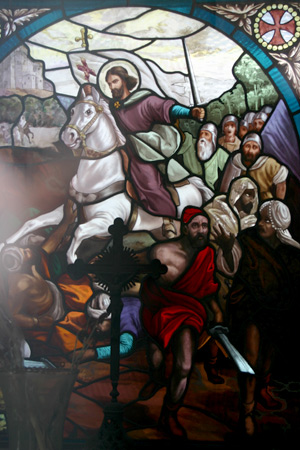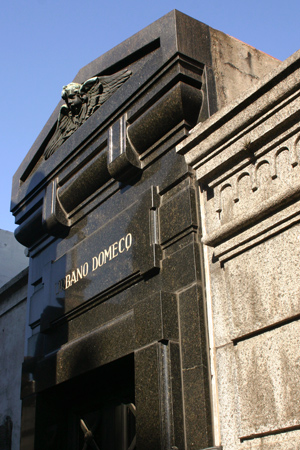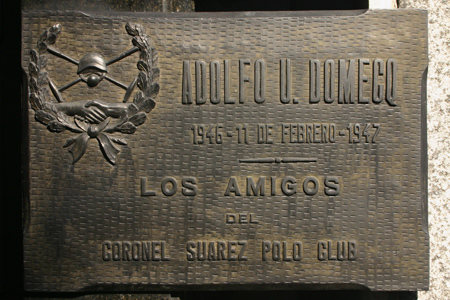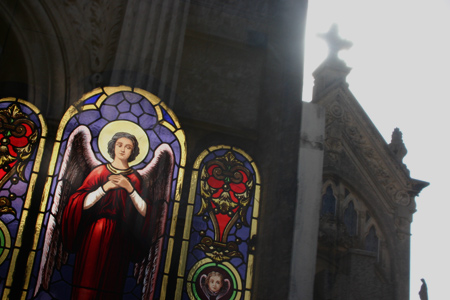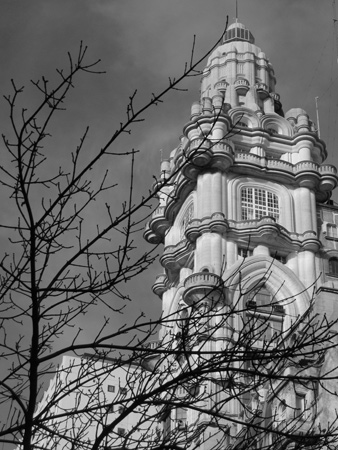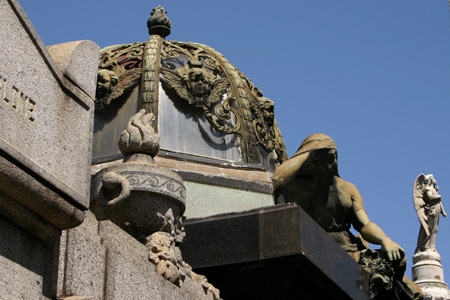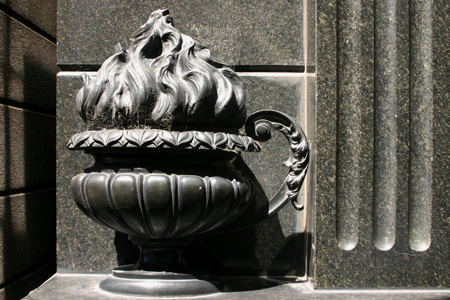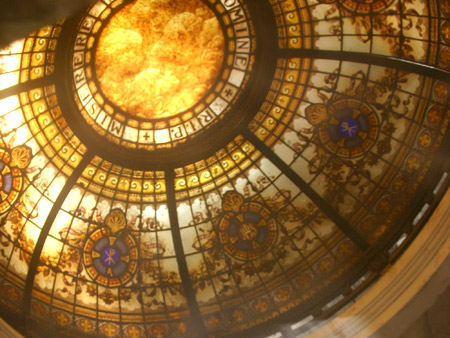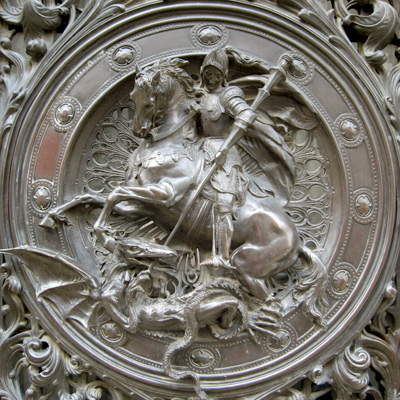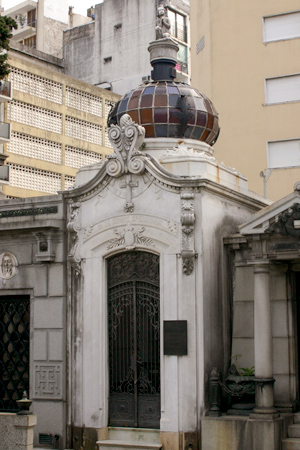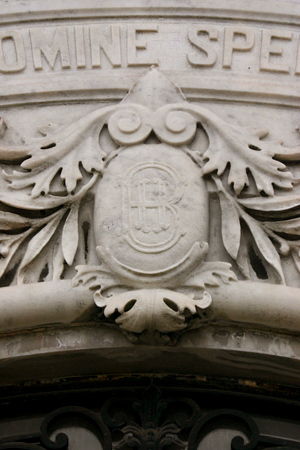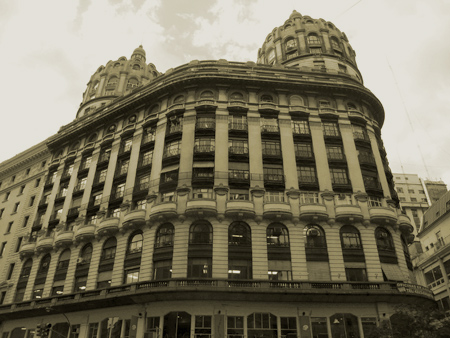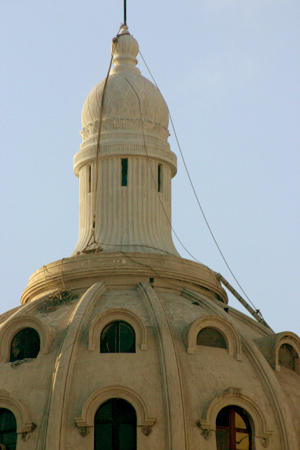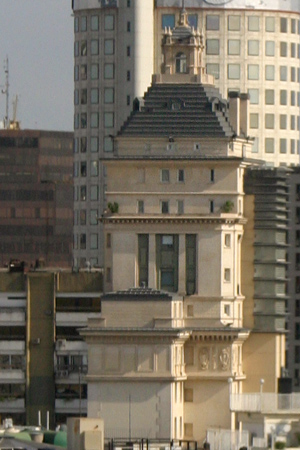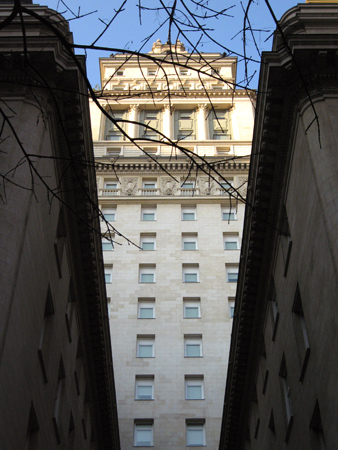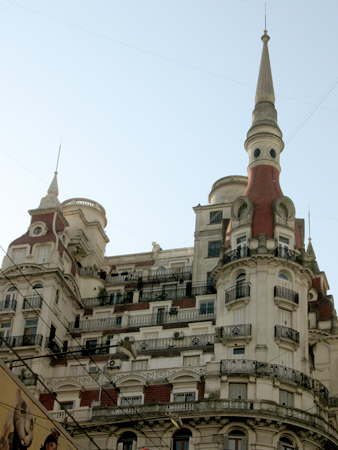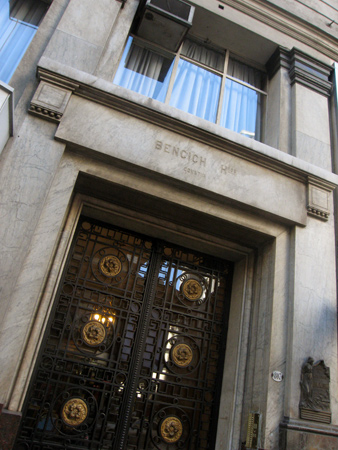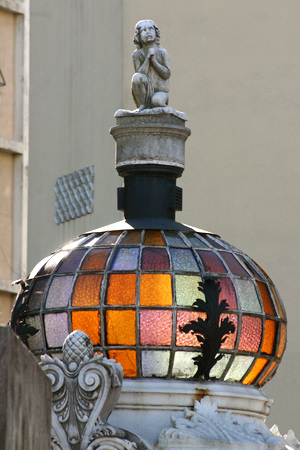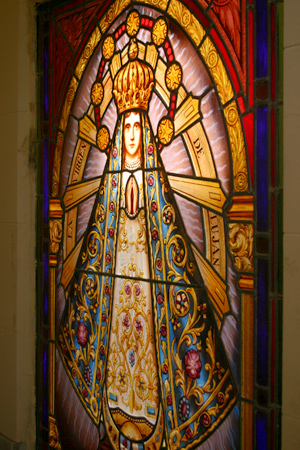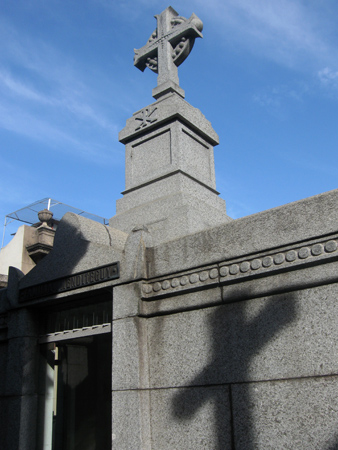
Carlos Menditeguy, sportsman & reknowned playboy, embodied Argentina’s growing role in world affairs in the 1950s. He did it all & did it well, becoming one of the top 6 polo players in the world & often seen in the Argentine Grand Prix. His skill & performance made Maserati take note, & they offered him an opportunity to race on behalf of the company in Europe. Menditeguy’s most significant Formula One race earned him third place while driving a Maserati 250F in 1957. He was notoriously hard to work with & demanding on his equipment but loved the risk involved. Menditeguy passed away in 1973.
Even though the family vault is far from the main walkways of the cemetery, Carlos obviously wanted a permanent stage presence. The northern façade contains a large glass panel providing the visitor an easy look at the elaborate altar & his casket… which will never be moved to underground storage:
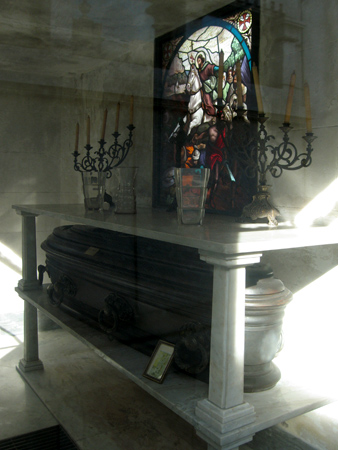
A stained glass panel in the rear of the vault depicts Santiago Matamoros, patron saint of Spain. Not in the least bit politically correct, St. James supposedly helped Spaniards through 800 years of territorial reconquest as they slowly pushed the Moors back to North Africa. Translated as St. James the Moor Slayer, the stained glass depicts him wielding a sword with several Moors being trampled by his horse:
